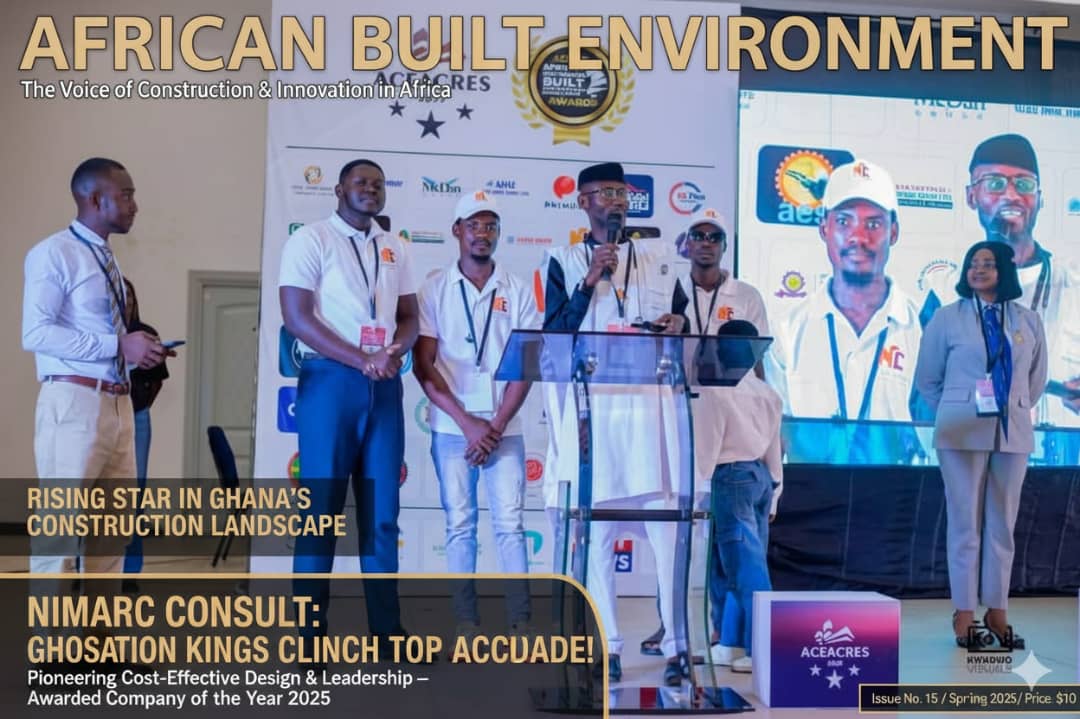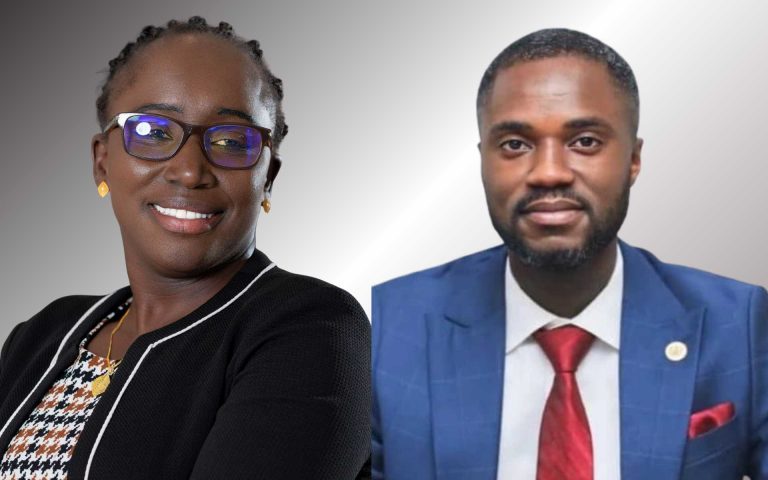Need for Integration,Strategic Partnerships et al, echoed…. As ACEACRES 2025 ends in Accra
By: Mohammed A. Abu
The Third edition of the Africa Construction, Engineering, Architecture, & Real Estate Summit (ACEACRES 2025) the flagship event of the Africa Engineering and Construction Network(ACECEN) has ended in Accra with an acknowledgment of the enormous task ahead as it relates to the green transitioning of Africa’s real estate sector and her built environment as a whole.
Speakers,Presenters and panelists were however optimistic that, there is light at the end of the tunnel in as much as Africa endeavours to look more from within than from without, in other to find local solutions to local African problems.
The need for African governments and policy makers to play a more active and crucial role, integrating the continent’s built environment, forging of strategic partnerships between Africa’s banking and insurance corporate bodies in other to address the big infrastructure funding gap, addressing the disconnect between industry and the academia,making more productive use of African expertise and adoption of cutting edge technologies for climate smart buildings and infrastructure designing and construction , were the key takeaways.
Supported by fifteen(15) industry Partners, five (5) Media Partners and eleven (11) Sponsors, the event attracted a total of three hundred and fifteen (315) local Ghanaian and external participants, out of which were forty-eight (48) were,Speakers, eight (8) panel discussants, eight (8) direct Presenters and speakers and two Representatives from the Engineers Regiment of the Ghana Armed forces as well as products and services exhibition as an important side attraction.
Graced by three Representatives from the Diplomatic Community, the event ended with an African Built Environment Awards of Excellence during which thirteen (13) corporate industry players were honoured as well as three (3) personalities.
Held under the theme, “Revolutionizing the Built Environment for Sustainable Infrastructure Development through Disruptive Innovations, Big Data & Quantum Technologies”, the summit aims to integrate the African built environment for socio-economic transformation, promoting partnerships and sustainability.
ACECEN’s CEO’s Opening Speech
In his opening speech, Daniel Kontie, the Chief Executive Officer(CEO) of ACECEN noted that, Africa currently stands at a defining moment. Our continent, Mr. Kontie noted, is experiencing rapid urbanization that has constantly put pressure on the limited urban infrastructure whilst the rate of infrastructural growth of the continent has since witnessed a significant decline for decades and the trend today still remains unchanged even in this Information, Technology and Artificial Intelligence dispensation.
The solution to the problems of Africa we seek, he noted, is within Africa and it may not work without the integration of the continent and this is where the very mission and vision of ACEACRES is derived from and we believe it must start with the integration of the African Built Environment.
The multimillion-dollar question one would ask is, Mr. Kontie noted, is it the resources that Africa lacks or the intellectual capacity to put up basic and transformative infrastructure for herself.
People he said, may have diverse views to this question but we are of the view that Africa has the intellectuals that can design, construct and deliver complex infrastructure projects just like their peers in any part of the globe. This is because we have several Africans across the globe blazing trails in diverse innovations.
On the other hand, he noted, one would also argue that Africa does not have the funding for such capital-intensive infrastructure projects such as the railways that will connect African cities to ease the flow of goods and services.
“On this position we hold a contrary view because Africa has the capacity to raise the requisite funding to put up strategic infrastructure that will integrate and position the continent for rapid economic transformation. The challenge has always been the lack of initiative on the part of African political leadership.
But we believe that the solution can also be found in the African corporate or business community or a private sector driven initiative.
The Consortium Approach
With Africa’s array of reputable banking and insurance giants across the continent Mr. Kontie believes, a consortium of African banks and insurance companies pulling funds together in order to tackle Africa’s infrastructure funding deficit is an affirmative action that the continent badly needs.
ACEACRES since its inception in 2023, he disclosed, has made a lot of progress in networking thousands (1000) of key-built environment stakeholders across the continent.
Last year alone, he added, we were able to assist quite a number of the Ghanaian built environment businesses establish in other African countries such as Nigeria, Rwanda, Kenya and Uganda through our network.
“We are taking this one step at a time and we are very optimistic that in no distant time, we will begin to see a dramatic change in the narrative” Mr. Kontie said.
Key Note Address
Ing. Prof. Emmanuel Appiah-Kubi an ACECEN Board Member and a lecturer at the Akenten Appiah-Menka University, in his Keynote Address, noted that, with Africa predicted to have a population of almost 2.5 billion by 2050, with nearly 70% of them residing in cities, the continent is at a crossroads.
By virtue of this unprecedented urban growth Africa, Professor Kubi said, either has to embrace innovation, data, and technology to transform her built environment, or the continent keep building with antiquated methods that leave her people dealing with inadequate infrastructure, traffic and climate vulnerability.
This decision is directly related to the summit’s theme, Professor Kubi, noted adding, it pushes us to not just build infrastructure but to create better, more intelligent, and more sustainable ones.
Africa’s built environment he noted, conveys conflicting messages. “On the one hand, we have top-notch projects, such cutting-edge projects in public areas, clever real estate projects, and contemporary airports. However, many towns continue to struggle with hazardous buildings, under-serviced urban settlements, inadequate housing, and unreliable transportation systems” he lamented.
The Problems
Africa’s familiar problems, he enumerated, are
- Infrastructure projects that run over budget and schedule.
- Construction practices that contribute significantly to carbon emissions.
- Weak resilience against flooding, earthquakes, and climate shocks.
The Opportunities
But in every challenge, he intimated, lies an opportunity, and today, that opportunity is technology anchored on three (3) pillars of transformation – Disruptive Innovation, Big Data, Quantum Technologies.
Disruptive Innovations
Disruptive Innovations Prof Kubi said, are the transformative technologies, processes, or business models that significantly alter how buildings and infrastructure are designed, constructed, operated, and maintained.
These innovations, he said, challenge traditional practices and often emerge from outside the mainstream industry, offering simpler, more affordable, or more sustainable alternatives that eventually outperform established solutions.
They are, he said, mainly characterized by:
- Low-End or New Market Entry: Begins by serving overlooked or underserved segments, such as affordable housing or remote construction sites.
- Technological Leap: Often involves advanced tools like 3D printing, modular construction, AI-driven design, or robotics.
- Sustainability Focus: Aligns with global goals like SDG 9 by promoting resource efficiency and reducing environmental impact.
Digital Transformation, he added, embraces digital technologies like BIM (Building Information Modeling), Internet of Things (IoT), and smart materials to revolutionize workflows.




